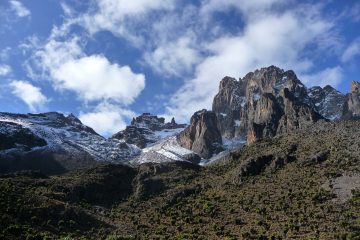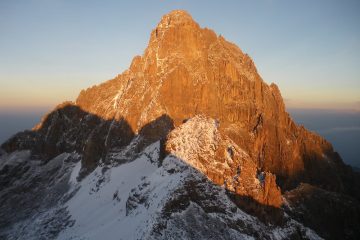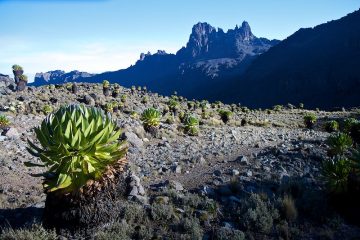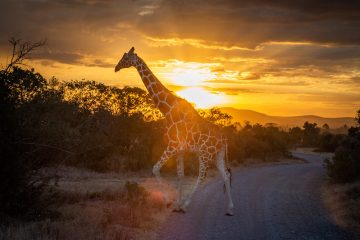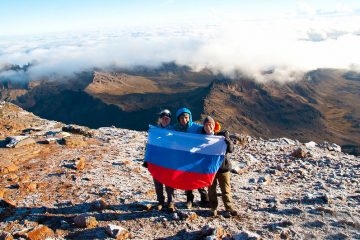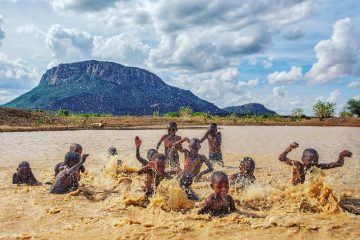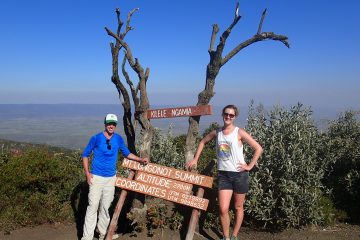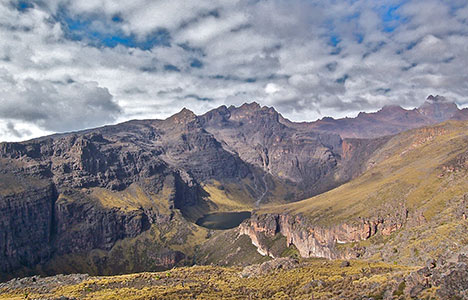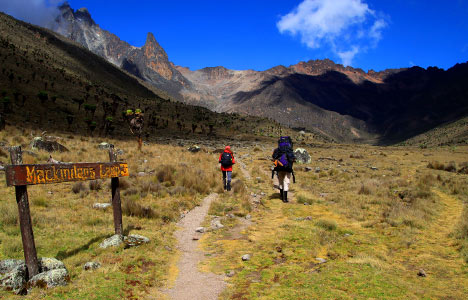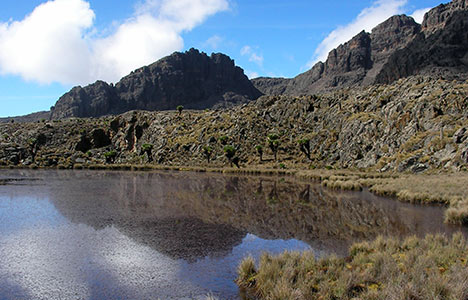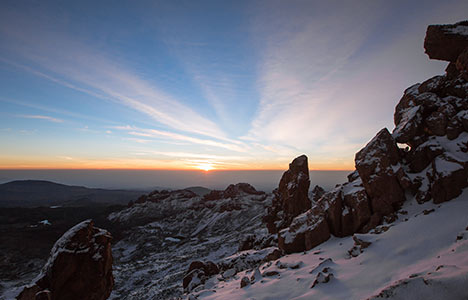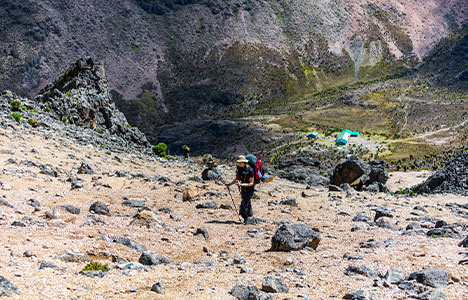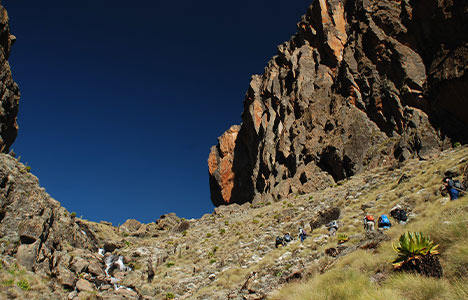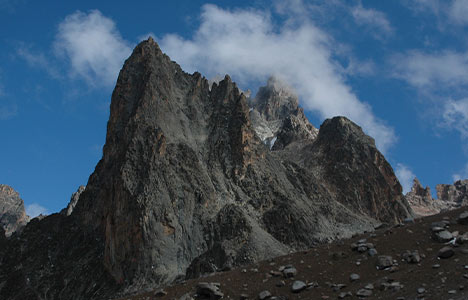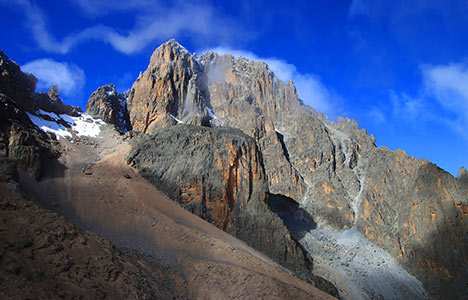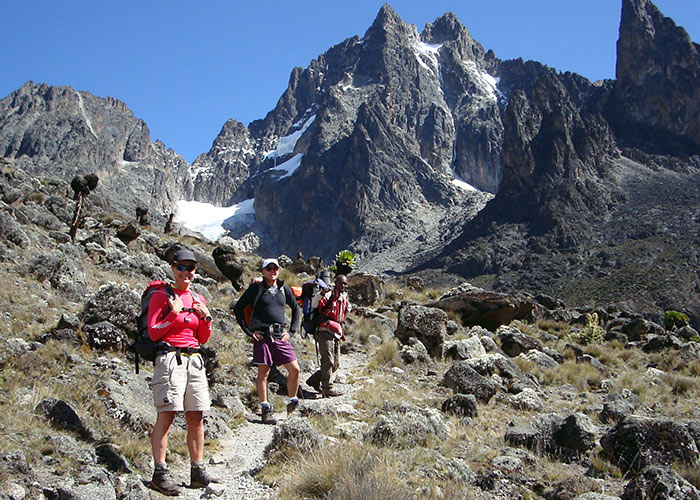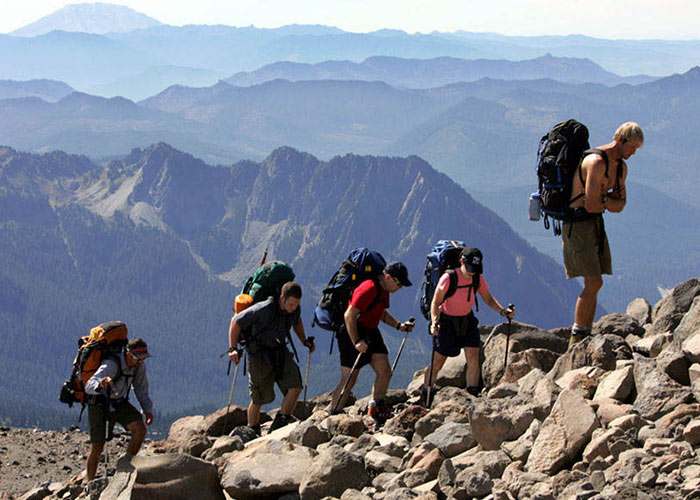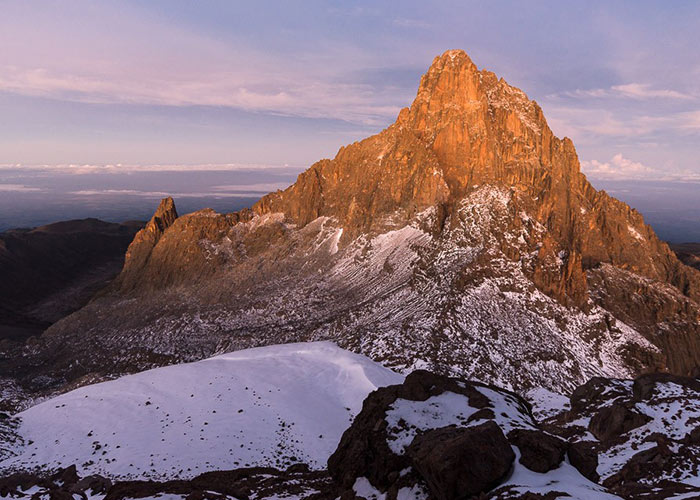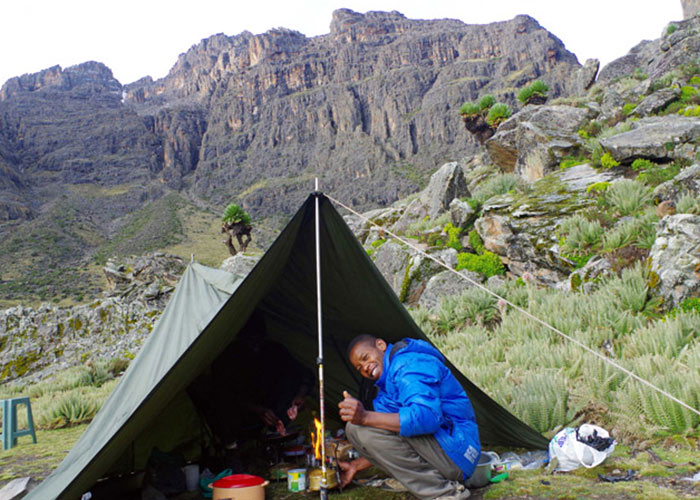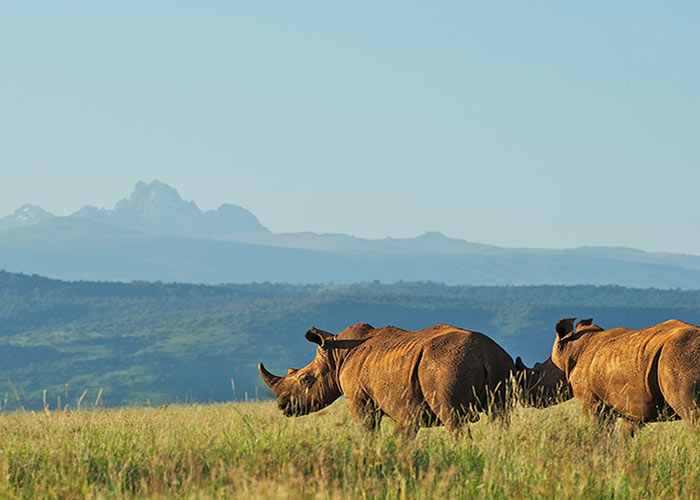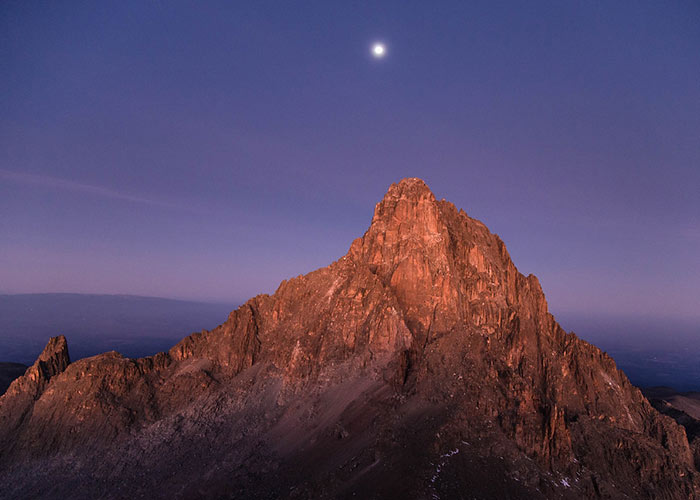Getting to Mount Kenya
The nearest town to Mount Kenya is Nanyuki, which is about a 3-hour drive from Nairobi. From there, you can arrange transport to the mountain. Most climbers start their climb from one of two main gates: Sirimon Gate or Naromoru Gate. Both gates are accessible by road from Nanyuki.
Choosing a Route
There are several routes up Mount Kenya, each with its own unique features and challenges. The most popular routes are the Sirimon Route and the Naromoru Route, which are both relatively easy and suitable for beginners. The Chogoria Route and the Burguret Route are more challenging and require a higher level of fitness and experience.
When to Climb
The best time to climb Mount Kenya is during the dry season, which runs from January to March and from July to October. During these months, the weather is generally clear and dry, with lower chances of rain and snow. However, Mount Kenya can be climbed year-round, although the rainy season (April to June and November to December) can make the climb more challenging and dangerous.
Accommodation
There are several accommodation options available on Mount Kenya, ranging from campsites to mountain huts to luxury lodges. The most popular accommodation options are the mountain huts, which are managed by the Kenya Wildlife Service. The huts are located along the main routes and provide basic shelter and amenities such as toilets and cooking facilities.
What to Pack
Packing for a climb up Mount Kenya requires careful planning and consideration. Here are some essential items you’ll need:
- Hiking boots
- Warm clothing
- Sleeping bag
- Sunscreen and sunglasses
- Headlamp or flashlight
- Water bottle and water purification tablets
- Snacks and energy bars
- First aid kit
- Map and compass or GPS device
Climbing Tips
Here are some tips to help you have a successful climb up Mount Kenya:
- Take your time – climb slowly and steadily to avoid altitude sickness.
- Drink plenty of water – staying hydrated is crucial for a successful climb.
- Pack light – the less you carry, the easier the climb will be.
- Listen to your guide – they have the experience and knowledge to help you have a safe and successful climb.
Fitness, Altitude and Safety on Mount Kenya
The difficulty is that climbing Mount Kenya is relatively accessible. With a good level of fitness, it’s easy to gain altitude rapidly and find yourself with a pounding headache and all the symptoms of acute mountain sickness the night before summiting. Trekking with a knowledgeable and experienced guide, at a reasonable and moderate pace, and staying hydrated makes all the difference. Allowing additional time for your ascent is always the best strategy; an extra day in Shipton’s Camp relieves the pressure of the schedule and allows you to enjoy the fantastic trekking around the summit.
In general, a rigorous fitness regimen is not required before to climbing Mount Kenya; anyone who is trek fit and comfortable walking 6-8 hours per day should be OK.
Guides, Porters and Cooks
A trekking crew will typically include a guide, cook, and porter for cooking equipment, as well as a personal porter for each trekker. It has been said before, but a good experienced guide is essential on Mount Kenya for two reasons: (1) they will keep you on track, be able to diagnose altitude sickness symptoms using their experience, and have the confidence to make critical decisions, and (2) their knowledge of the mountain’s flora and fauna will bring the environment to life. All guides and porters must be registered with Kenya Wildlife Services and have a Mt Kenya National License mountain guide park.
All of the guides will have a decent understanding of the routes, but only the best will have knowledge of animals and expertise dealing with altitude sickness issues.
Mount Kenya Route options
There are five primary approaches to the summit.
Sirimon is the most popular climb since the altitude gain is gradual and it provides one of the most scenic picturesque approaches to the summits. When climbing, allow at least two nights, however, we recommend staying an extra night at the last camp (Shipton’s) on the way up.
Burguret is the ideal way to go if you want to escape the traffic. On this little-used path, you’ll be hacking through magnificent forests and camping in remote campgrounds. Going up this road is difficult; it resembles a game track in sections, and it is often muddy and difficult to navigate. Burguret is frequently combined with Chogoria or Sirimon trails.
Naro Moru: The most popular descending path is Naro-Moru, which is fast and simple (at least on the way down!). In the wet season, Naro Moru goes through the well-known vertical bog area, which becomes quite flooded. On this path, the greenery is at its most stunning. It may be done in one long day, but most people do it in two days and one night.
Chogoria: Choose dramatic Chogoria over Naro Moru for the descent if you have more time. The Chogoria path takes you past tarns, waterfalls, and a breathtaking canyon. Allow for a two- or three-day descent.
Timau: Timau is rarely visited these days because there is little forest on this side of the mountain and no amenities, only open land.
Best time to climb Mount Kenya
First and foremost, despite being in the equator, Mount Kenya is cold at night at a height of 4,000 meters! You must be prepared for temperatures far below freezing at night (a decent three/four-season sleeping bag is required). At Point Lenana, temperatures as low as – 10 or even negative 20 degrees Celsius are not uncommon. If you’re hiking during the short or long rains, anticipate plenty of scorching overhead sun and rain.
The long rains, which go from mid-March to mid-June, and the short rains, which last from September to October, are the two rainy seasons in Kenya.
Mount Kenya is trekkable throughout the year, but be prepared for heavy rains and muddy trails during the long rains. The good news is that even during the worst rainstorms, there is generally dependable sunlight for a large chunk of the day (10 a.m. to 3 p.m.). You may anticipate lots of sunshine outside of the wet season.
How to get to Mount Kenya
Mount Kenya is about a short 4-hour drive from Nairobi. There are decent paved roads all the way to the villages at the foot of the mountain, but the final stretch up to the park gates is a rough dirt road that may become nearly impassable during the rainy season, necessitating the use of a 4wd vehicle.
Mount Kenya National Park Entrance Fees
The Kenya Wildlife Service continues increasing park admission fees (to the extent that most websites offering Mount Kenya treks are displaying out-of-date prices). Currently, a three-day package costs $150 per adult, a four-day package costs $220 per adult, and a five-day package costs $300 per adult. This includes both the admission cost and the camping expenses. So, on a normal 5 day Sirimon Naro-moru itinerary from Nairobi, you’ll need to spend $220 per person for 4 days in the park. For current prices, go to http://www.kws.org/.
Combining Mount Kenya Treks and Safaris
You’d be crazy to travel to Kenya only to climb Mount Kenya and not see some of the best attractions in the country and experience the wildlife in the Kenyan parks. The majority of visitors will wish to combine their hike with a safari. The northern parks of Meru and Samburu are the closest to Mount Kenya. Both parks are beautiful, with dry landscapes that are evocative of The Lion King. There are mid-range camping choices available, as well as the standard luxury safari hotels. You can go to Samburu in a couple of hours from Mount Kenya, and if you don’t have much time, three days will be plenty to have a decent taste of the region before returning to Nairobi for your trip home.
You may drive from Mount Kenya to Masai Mara through the Rift Valley Lakes if you have more time. This extension should take about 6 days.
Do I need a permit to climb Mount Kenya?
- Yes, you need a permit to climb Mount Kenya, which can be obtained from the Kenya Wildlife Service.
Is it safe to climb Mount Kenya?
- Yes, climbing Mount Kenya is generally safe as long as you take the necessary precautions and follow your guide’s instructions.
Do I need to be an experienced climber to climb Mount Kenya?
- No, you don’t need to be an experienced climber to climb Mount Kenya, but you should have a moderate level of fitness and be prepared for the physical demands of the climb.
Can I climb Mount Kenya without a guide?
- No, it’s not recommended to climb Mount Kenya without a guide. A guide can help you navigate the mountain safely and provide essential support and advice.
How long does it take to climb Mount Kenya?
- The duration of the climb depends on the route and the climber’s fitness level. The Sirimon Route and the Naromoru Route can take 3-4 days, while the Chogoria Route can take 5-6 days.
What is the altitude sickness, and how can I avoid it?
- Altitude sickness is a condition caused by exposure to high altitudes, where the body struggles to adjust to the lower oxygen levels. To avoid altitude sickness, climbers should acclimatize themselves gradually by ascending slowly and taking rest days. Drinking plenty of water and avoiding alcohol and smoking can also help.



